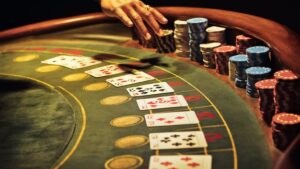
Corona of Confidence: Building an Aura of Control in High-Stakes Bets
Building Your Corona of Confidence: Mastering High-Stakes Environments
The Psychology of Control in High-Pressure Situations
*Strategic confidence* comes from developing a systematic approach that combines mental preparation, physical presence, and tactical intelligence. The key to projecting *authentic authority* lies in mastering both internal and external elements of control.
Core Components of Commanding Presence
Physical Mastery
*Body language optimization* requires precise control over:
- Measured breathing patterns
- Calibrated facial expressions
- Deliberate movement patterns
- Calculated spatial positioning
Mental Framework
*Psychological preparation* encompasses:
- Emotional state tracking
- Performance metric analysis
- Stakeholder relationship management
- Risk assessment protocols
Strategic Implementation
*Professional presence* develops through:
- Regular practice sessions
- Detailed performance tracking
- Systematic feedback loops
- Continuous skill refinement
FAQ: Mastering High-Stakes Environments
Q: How can I maintain composure during critical moments?
A: Focus on controlled breathing, maintain neutral expressions, and rely on practiced response patterns.
Q: What role does preparation play in projecting confidence?
A: Thorough preparation creates genuine authority through deep knowledge and rehearsed scenarios.
Q: How can I improve my body language in high-pressure situations?
A: Practice conscious posture control, maintain eye contact, and use deliberate gestures.
Q: What metrics should I track to assess my performance?
A: Monitor decision outcomes, stakeholder feedback, and personal stress indicators.
Q: How do I build credibility with key stakeholders?
A: Demonstrate consistent competence, maintain transparent communication, and deliver reliable results.
Performance Optimization Strategies
*Success indicators* include:
- Measured response patterns
- Consistent execution
- Stakeholder trust
- Documented outcomes
Through systematic application of these principles, practitioners develop an unshakeable *aura of control* that commands respect and drives results in high-stakes environments.
Understanding the Psychology of Confidence

Understanding the Psychology of Confidence in Decision-Making
The Dual Systems of Confidence
*Decision-making psychology* operates through two distinct mental frameworks.
The *emotional system* provides quick, instinctive responses, while the *analytical system* processes information methodically.
Understanding these systems helps develop *balanced confidence* when facing critical choices.
Key Psychological Components
*Psychological factors* significantly influence confidence levels during high-stakes situations. The most impactful elements include:
- *Overconfidence bias*: Overestimating personal judgment accuracy
- *Confirmation bias*: Seeking information that supports existing beliefs
- *Illusion of control*: Believing we’ve more influence over outcomes than reality suggests
Building Structured Confidence
*Developing authentic confidence* requires a systematic approach:
- *Objective probability assessment*
- *Emotional awareness management*
- *Quantifiable decision frameworks*
- *Reality-based certainty calibration*
FAQ: Psychology of Confidence
Q: How can I improve my decision-making confidence?
A: Implement structured analysis methods, practice emotional awareness, and regularly calibrate confidence through outcome tracking.
Q: What role do emotions play in confident decisions?
A: Emotions provide valuable intuitive insights but must be balanced with analytical thinking for optimal results.
Q: How can I recognize overconfidence?
A: Monitor decision outcomes, seek external feedback, and compare predicted versus actual results regularly.
Q: What’s the difference between true and false confidence?
A: True confidence stems from experience and analysis, while false confidence often results from emotional bias or incomplete information.
Q: How do I maintain confidence during high-pressure situations?
A: Focus on systematic analysis, rely on prepared frameworks, and maintain awareness of psychological biases.
Strategic Confidence Development
*Effective confidence building* requires integrating both psychological awareness and analytical skills.
By transforming subjective feelings into *measurable metrics*, decision-makers can develop reliable confidence patterns.
This approach creates a foundation for consistent, well-calibrated judgment in challenging situations.
The key to *sustainable confidence* lies in maintaining this disciplined integration while continuously refining assessment methods through experience and outcome analysis.
Body Language That Commands Respect
*Commanding Body Language: The Ultimate Guide to Professional Presence*
*Mastering Nonverbal Authority Signals*
*Strategic body positioning* forms the foundation of commanding presence.
Stand with feet shoulder-width apart and shoulders squared to project confidence. This *power posture* naturally claims space while maintaining professional composure.
Weight distribution should remain balanced, creating a stable foundation that communicates authority.
*Essential Visual Communication Components*
*Eye contact dynamics* play a crucial role in establishing dominance. Maintain steady eye contact for 4-5 seconds, incorporating natural breaks to avoid appearing aggressive.
Keep *hand gestures* purposeful and visible above waist level, demonstrating openness while maintaining control of interactions.
*Seated Power Positions*
*Professional seated posture* requires maintaining an upright back position while avoiding defensive arm crossing.
Claim your space confidently while remaining open and approachable. This *balanced presence* communicates both authority and accessibility.
*Breath and Voice Control*
Practice *diaphragmatic breathing* to maintain composure under pressure.
Deliberate breathing patterns support voice modulation, allowing for lower vocal register and measured speech pace. These techniques enhance authority without appearing confrontational.
*Strategic Mirroring and Rapport*
Subtle *body language mirroring* builds connection while maintaining position. Match your counterpart’s general posture while keeping your own authoritative presence intact.
*Frequently Asked Questions*
Q: How long should I maintain eye contact?
A: Maintain eye contact for 4-5 seconds with natural breaks to avoid intimidation.
Q: What hand positions convey the most authority?
A: Keep hands visible above waist level, using calculated gestures that emphasize key points.
Q: How can I project confidence while seated?
A: Maintain straight posture, avoid crossing arms, and claim your space naturally.
Q: What breathing techniques enhance presence?
A: Use diaphragmatic breathing for composure and stable voice control.
Q: How can I mirror body language effectively?
A: Subtly match general postures while maintaining your own authoritative presence.
Mastering Emotional Self-Regulation

Mastering Emotional Self-Regulation in Trading
Understanding the Foundation of Trading Psychology
*Emotional control* stands as the cornerstone of successful trading decisions, particularly during *high-stakes market conditions*.
먹튀검증 커뮤니티 추천 the most technically proficient traders can falter when emotional responses override rational judgment, making *self-regulation* a critical skill for sustained trading success.
The Three-Step Emotional Regulation Framework
1. Trigger Identification
*Early recognition* of emotional triggers is essential for maintaining trading discipline. Key physical indicators include:
- *Elevated heart rate*
- *Sweaty palms*
- *Shallow breathing*
- *Muscle tension*
2. Immediate Response Techniques
*Strategic intervention* methods help maintain emotional equilibrium:
- *Controlled breathing exercises*
- *Mental visualization*
- *Temporary market detachment*
- *Position sizing adjustment*
3. Performance Documentation
Maintain a detailed *trading journal* to:
- Track emotional patterns
- Document decision rationale
- Analyze outcome correlation
- Refine trading strategies
Building Emotional Resilience
*Progressive exposure* through small-position trading helps develop robust *emotional control mechanisms*.
This systematic approach creates reliable neural pathways for maintaining composure during critical market moments.
Frequently Asked Questions
Q: How do emotions affect trading performance?
A: Emotions can significantly impact decision-making ability, risk assessment, and trade execution quality.
Q: What’re the best techniques for maintaining trading discipline?
A: Regular practice of breathing exercises, maintaining a trading journal, and implementing systematic trading rules.
Q: How long does it take to develop emotional self-regulation?
A: Development varies by individual but typically requires 3-6 months of consistent practice and application.
Q: Can emotional regulation be learned?
A: Yes, emotional regulation is a skill that can be developed through structured practice and conscious effort.
Q: What role does mindfulness play in trading psychology?
A: Mindfulness enhances awareness of emotional states and helps maintain objective market analysis.
Remember: *Emotions serve as valuable market indicators* when properly interpreted and managed through systematic self-regulation practices.
Building Knowledge Through Deliberate Practice
Building Knowledge Through Deliberate Practice in Trading
Mastering Trading Through Systematic Practice
*Deliberate practice* stands as the cornerstone of trading mastery, requiring a structured approach beyond passive learning.
*Strategic skill development* demands systematic training that consistently challenges comfort zones and builds comprehensive market understanding.
Traders must allocate *dedicated practice sessions* to develop core competencies without risking real capital.
Breaking Down Complex Trading Elements
*Trading proficiency* develops through the careful dissection of individual components. Focus on mastering these *key trading elements*:
- *Entry timing optimization*
- *Position sizing techniques*
- *Exit strategy development*
- *Risk management protocols*
- *Pattern recognition skills*
Structured Practice Implementation
Create *targeted practice drills* that address specific weaknesses in your trading approach. Implement *simulation exercises* designed to strengthen areas requiring improvement, such as:
- *Chart pattern analysis*
- *Market volatility management*
- *Trade execution timing*
- *Risk-reward assessment*
Performance Tracking and Goal Setting
*Documentation and analysis* form the foundation of improvement. Maintain detailed records of:
- Practice session outcomes
- Performance metrics
- Identified weaknesses
- Strategy refinements
- Progress indicators
Frequently Asked Questions
Q: How often should traders engage in deliberate practice?
A: Successful traders typically dedicate 2-3 hours daily to focused practice sessions.
Q: What tools are essential for effective trading practice?
A: Paper trading platforms, market simulators, and performance tracking software are crucial tools.
Q: How long does it take to see improvement through deliberate practice?
A: Measurable improvement typically occurs within 3-6 months of consistent, focused practice.
Q: Should beginners focus on multiple strategies simultaneously?
A: Focus on mastering one trading strategy before expanding to others for optimal skill development.
Q: How can traders measure practice effectiveness?
A: Track key metrics like win rate, risk-reward ratio, and strategy adherence to measure progress.
Remember to establish *clear performance objectives* for each practice session and regularly review progress against established benchmarks. This structured approach ensures steady advancement toward trading proficiency.
Navigating High-Pressure Social Dynamics

Navigating High-Pressure Social Dynamics: A Strategic Guide
Understanding Power Structures and Influence
*Strategic social navigation* requires deep insight into how different stakeholders shape outcomes in high-stakes environments.
Each participant enters with distinct *motivations*, *risk tolerances*, and *personal agendas* that fundamentally influence group dynamics and decision-making processes.
*Power mapping* serves as an essential first step before entering challenging social situations. This involves identifying:
- *Key decision-makers* and their core motivations
- Formal organizational hierarchies
- *Informal influence networks*
- Potential conflicts of interest
- Historical alliances and rivalries
Reading Social Cues and Body Language
*Social intelligence* in high-pressure environments demands careful observation of both verbal and non-verbal communications. *Key indicators* include:
- Micro-expressions revealing anxiety or confidence
- Changes in vocal tone and pitch
- Postural shifts during critical discussions
- *Alliance patterns* and group formations
- Temporal dynamics of decision-making
Strategic Response Techniques
Developing *effective responses* requires:
- Maintaining emotional neutrality
- Adapting communication style to audience
- Building strategic relationships
- Managing information flow
- Preserving negotiation leverage
Frequently Asked Questions
Q: How can I identify the real decision-makers in a group?
A: Focus on observing whose opinions others defer to, who’s final approval power, and which individuals consistently influence group outcomes.
Q: What’re the key signs of hidden anxiety in high-stakes situations?
A: Watch for increased fidgeting, voice tremors, defensive posturing, and excessive self-justification.
Q: How do you maintain emotional distance while staying engaged?
A: Practice mindful observation, focus on objective data, and develop pre-planned response strategies.
Q: What techniques help in tracking shifting alliances?
A: Document interaction patterns, note consistent voting blocks, and observe informal gatherings and side conversations.
Q: How can you effectively counter aggressive social tactics?
A: Stay composed, document behaviors, build supportive coalitions, and maintain focus on objective outcomes.
The mastery of *high-pressure social dynamics* ultimately depends on combining careful observation, strategic thinking, and emotional intelligence while maintaining professional boundaries and ethical standards.

